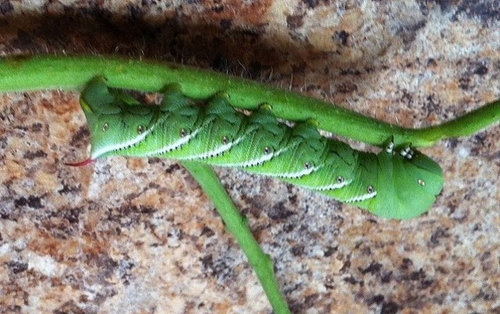Big green bug
jdlaugh
11 years ago
Related Stories

GARDENING AND LANDSCAPINGBreezy and Bug-Free Modern Porches
Screening keeps pests out of these diverse porches across the U.S., while thoughtful designs keep them visually appealing
Full Story
GREEN DECORATINGEasy Green: Big and Small Ways to Be More Water-Wise at Home
These 20 tips can help us all make the best use of a precious resource. How do you save water in summer?
Full Story
GARDENING AND LANDSCAPINGPorch Life: Banish the Bugs
Don't let insects be the bane of your sweet tea and swing time. These screening and product ideas will help keep bugs at bay on the porch
Full Story
GARDENING AND LANDSCAPINGBid Bad Garden Bugs Goodbye and Usher In the Good
Give ants their marching orders and send mosquitoes moseying, while creating a garden that draws pollinators and helpful eaters
Full Story
DIY PROJECTS12 Signs You've Caught the DIY Bug
Been making inventive things from scratch? Repurposing salvaged pieces creatively? It may be more serious than you think
Full Story
HOUSEKEEPING20 Things You Might Be Forgetting to Spring-Clean
Clean these often-neglected areas and your house will look and feel better
Full Story
DREAM SPACESDesign Workshop: The Case for Big Overhead Doors
Garage-style doors are cost-effective solutions for opening rooms to dream views and fresh air — and they’re more stylish than ever
Full Story
BATHROOM DESIGN14 Bathroom Design Ideas Expected to Be Big in 2015
Award-winning designers reveal the bathroom features they believe will emerge or stay strong in the years ahead
Full Story
MOST POPULAR5 Ways to Hide That Big Air Conditioner in Your Yard
Don’t sweat that boxy A/C unit. Here’s how to place it out of sight and out of mind
Full Story
GREEN BUILDINGHouzz Tour: The Goal? A Big Impression but a Small Footprint
This family home in Nevada City, California, embraces the environment with enthusiasm and style
Full StorySponsored
Columbus Area's Luxury Design Build Firm | 17x Best of Houzz Winner!
More Discussions








Okiedawn OK Zone 7
chickencoupe
Related Professionals
Aurora Landscape Contractors · Addison Landscape Contractors · Battle Ground Landscape Contractors · Longmont Landscape Contractors · Milton Landscape Contractors · Mission Viejo Landscape Contractors · Severna Park Landscape Contractors · Wentzville Landscape Contractors · Woodbury Landscape Contractors · Reisterstown Landscape Contractors · North Aurora Landscape Contractors · Bellevue Decks, Patios & Outdoor Enclosures · Lockport Decks, Patios & Outdoor Enclosures · San Diego Decks, Patios & Outdoor Enclosures · St. Louis Decks, Patios & Outdoor EnclosuresjdlaughOriginal Author
Okiedawn OK Zone 7
susanlynne48
Okiedawn OK Zone 7
okievegan
Okiedawn OK Zone 7
rstorch
jdlaughOriginal Author